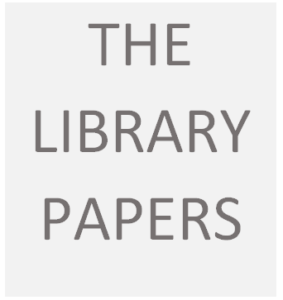Information Literacy
Traditionally, information literacy has meant knowing how to find, evaluate and apply information about a given topic. The list below is from The Association of College & Research Libraries, part of the American Library Association. According to this document, information literacy involves:
- Determining the extent of information needed
- Accessing the needed information effectively and efficiently
- Evaluating information and its sources critically
- Incorporating selected information into one’s own knowledge base
- Using information effectively to accomplish a specific purpose
This kind of knowledge is more important than ever in this ‘post truth’ era of ‘false news’ and ‘discretionary facts,’ when the questions of what is truth, and what qualifies as a fact are being raised more passionately than ever before. Neither the school nor the teacher nor the librarian can be an expert in all areas which students might explore. Students need to be able to make independent assessments of the type and quality of knowledge they are looking at.
This is a large task. However it is only the beginning of what ‘information literacy’ now means. Because of the proliferating information available electronically and digitally, students need to learn to take into account information about other aspects of the message than just content: they also need to understand how the form or the platform affects the message.
We are all epistemologists now
In order to assess information, students should have an understanding of not only the field of inquiry, but also the more global questions of how this field fits in the social context. This level of examination can be called the ‘register,’ and when thinking at this level, students need to ask “is this information formal or informal?” If formal, is it directed to experts or novices? Another aspect which needs to be looked at is the scale or level of specialised detail offered in the information: at what level do you need to know something—is it at the very specific level of Google Street View, or at the more general level of Google Earth, say? Or at an even more widely general view of the solar system etc. This video zooming in or earth from outer space can serve as a metaphor for the scale of focus. Even very young students can understand this concept.
At the more local level of information literacy students need to be aware of the differences between different genres: is it fiction or non-fiction? Is it poetry or prose, novel, short story, or graphic novel. This can involve identifying the conventions which create a genre, as in my example of the multi-modal analysis of the genre of memoir—in order to understand how memoir works, students need to realize that ‘memoir’ constitutes a particular type of discourse which can be represented through a variety of media, but which have characteristic features that distinguish it from other kinds of discourses, such as 3rd person narratives or biography. And these features can be compared across examples, as in graphic novels, or across media, as in the comparison between picture books and chapter books. Information literacy means assessing both content and modes of representation.
Information literacy of this type for the most part depends on the specific discipline or genre, but there are some general universal concepts. According to the BCTLA document The Points of Inquiry, BC students need to know more about how to find the right resources for their purposes, including books, journals, and databases; how to evaluate sources critically; how to write a good research question and a solid thesis statement; how to incorporate quotations and to cite the sources, and why; how to paraphrase and how not to plagiarize; and how and whom to ask for help. You will find in the resources below links to such general information sites for information literacy in the tabs below.
Resources
Librarians and Library Associations
- Association of College & Research Libraries http://www.ala.org/acrl/standards/ilframework
- BCTLA Points of Inquiry http://bctf.ca/bctla/pub/documents/Points%20of%20Inquiry/PointsofInquiry.pdf
- Davis, H. (2010, February 3). Critical Literacy? Information! [Blog post]. Retrieved from http://www.inthelibrarywiththeleadpipe.org/2010/critical-literacy-information/
Assessing Information Quality
- Wikipedia and the Amelia Bedelia Hoax: http://www.slj.com/2014/08/books-media/librarians-react-to-amelia-bedelia-hoax/
- CRAP test and handout: https://libraries.mercer.edu/research-tools-help/citation-tools-help/images/PrintableCRAPtest.pdf
- Asking good questions: Asking good questions: Bloom’s Taxonomy: https://cft.vanderbilt.edu/guides-sub-pages/blooms-taxonomy/
Plagiarism
- Definition and examples: http://www.plagiarism.org/
- Citing sources appropriately: http://www.citationmachine.net/ ; https://owl.english.purdue.edu/owl/resource/560/01/
Copyright
- Government of Canada: http://www.ic.gc.ca/eic/site/cipointernet-internetopic.nsf/eng/h_wr00003.html
- UBC policy: http://copyright.ubc.ca/guidelines-and-resources/faq/basics/
- Copyright Q & A for Teachers http://cmec.ca/publications/lists/publications/attachments/291/copyright_matters.pdf
Copyleft
- Wikipedia: https://en.wikipedia.org/wiki/Copyleft
- GNU—How to Use Copyleft https://www.gnu.org/copyleft/gpl-howto.html
- Electronic Frontiers Foundation: https://www.eff.org/
- Lawrence Lessig: http://www.lessig.org/books/






